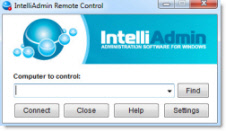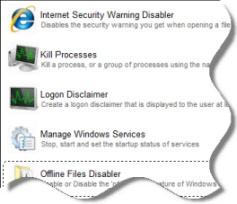Reactivating Terminal Licensing Server
Hello,
I'm not sure if I have to reactivate our TLS server via Microsoft.
I've just tried to P to V our Windows 2003 Terminal Server Licensing server and it all worked (well nearly). The server boots up and can log onto the domain and get to the desktop etc, but it is the part I go Start > All programs > Administrative
Tools > Terminal Server Licensing it says it can't find a Licensing server, it looks like it goes to our Domain controller first then says can't find this server. I can manually add the server and it all looks ok, but I'm not sure why the TLS server
isn't being found automatically as it is a clone, the only difference is the IP of the P to V server is it's IP address. I've turned the physical server back on and turned off the virtual one in the mean time.
Maybe this isn't anyting to do with the server being virtualised, but I would of though the domain controllers wouldn't noticed any difference?
April 1st, 2011 5:06am
Hello,
IIRC correct what you see is normal. The TS licensing server is not added automatically within Windows server 2003, it's the same in our doamins.
The following forum is the better place for TS/RD questions:
http://social.technet.microsoft.com/Forums/en/winserverTS/threadsBest regards Meinolf Weber Disclaimer: This posting is provided "AS IS" with no warranties or guarantees , and confers no rights.
Free Windows Admin Tool Kit Click here and download it now
April 1st, 2011 5:09am
Please post your query on
SCVMM forum.
Thanks
April 1st, 2011 5:10am
Does it mean it should still work?
I'm worried I go live with the VM and users requesting a license can't get one?
Free Windows Admin Tool Kit Click here and download it now
April 1st, 2011 5:10am
This is VMware, is it ok to post in there?
April 1st, 2011 5:13am
Hi,
I think there may be something changed when doing P to V, so your terminal server can not find the license server in the domain.
Meanwhile, you need to pay a attention to the following notice:
The terminal servers attempt to contact license servers in the following order:
1. Any preferred license servers that are specified in Group
Policy.
2. Any Enterprise license servers or Domain license servers
that are specified in the registry.
In Windows Server 2003, the relevant registry key is LicenseServers , and it is located under HKEY_LOCAL_MACHINE\SYSTEM\CurrentControlSet\Services\TermService\Parameters.
In Windows 2000, the relevant registry key is DefaultLicenseServer, and it is located under HKEY_LOCAL_MACHINE\SYSTEM\CurrentControlSet\Services\TermService\Parameters.
In Windows Server 2003, you can specify multiple license servers in the registry. In Windows 2000, you can only specify one license server.
3.
Enterprise license servers that are specified in Active Directory.
4. Domain license servers.
Meanwhile, the Enterprise license server is automatically discovered by any terminal server that is in the same site as the license server and by
default, only serves terminal servers in the same site. If you are installing a Domain license server, the computer on which you install the license server must be a domain controller for it to be automatically discovered by terminal servers that communicate
with it. If you install a Domain license server on a member server, you must specify this server as a preferred license server on all terminal servers that need to communicate with it. If the computer on which you plan to install the Domain license server
is in a workgroup, it can only be automatically discovered by terminal servers on the same subnet.
Thanks.
Free Windows Admin Tool Kit Click here and download it now
April 4th, 2011 2:48am


